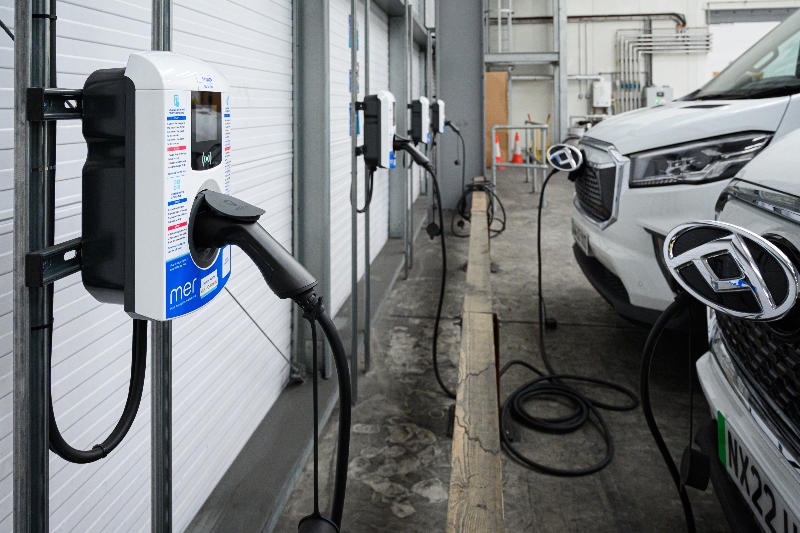

When it comes to discussions about the transition to electric transport, vans and lorries have tended to be a bit overlooked. It’s all been about cars and private transport, but when you examine the drivers behind the move to EV – the need for cleaner air, less emissions, and less reliance on fossil fuels – electrifying commercial vehicles is right up there in terms of the benefits it will deliver. So, why the hesitance in transitioning commercial vehicles to electricity? There is no getting away from the fact that there are challenges, but it is by no means impossible.
What’s driving electrification?
Transport is responsible for 26% of the UK’s total emissions, a higher proportion of the UK’s greenhouse gas than any other sector. Within the sector, heavy goods vehicles (HGVs) account for 19% of domestic transport emissions – 4.3% of overall UK greenhouse emissions – and light commercial vehicles (LCVs) are responsible for 16% of emissions. Together they emit 34 million tonnes of carbon dioxide equivalent (CO2e). Electrifying the UK’s lorries and vans will take a great deal of carbon emissions out of the atmosphere. It’s little wonder then that it has become a Government imperative and subject to legislation.
Under the zero-emission vehicle (ZEV) mandate, sales of new, non-zero emission HGVs weighing 26 tonnes and under will be phased out by 2035, and all new HGVs in the UK will be zero-emission by 2040. That’s not very far away.
We are seeing evidence of the move towards electric commercial vehicles being played out in the number of new battery electric van (BEV) registrations, which grew by 21% in 2023, and the introduction of new electric LCV and HGV models. However, only 5.2% of LCV registrations in the first quarter of 2023 were electric, with electric HGVs faring less well at less than 3%. Clearly, there is some way to go to achieve the ambitious zero emission vehicle mandate of BEVs representing 10% of the market in 2024.
Cost is a major barrier
One major barrier to decarbonising public sector HGVs and LCVs is money. Fleet managers typically budget to replace their fleets every four to five years, and electric commercial models are more expensive than their diesel counterparts. A typical battery electric truck costs around two to three times more than its diesel equivalent.
In addition, there is the cost of power – not just the cost of the electricity itself, but also the cost of getting the electricity from the grid and into the battery. Public charging at the scale required to power a van or HGV is expensive. Similarly, the cost of installing an on-site charging infrastructure comprising charge point hardware, management software, cables, bays, etc. can be daunting. Until there is parity in the cost of vehicles and a demonstrable return on the cost of installing EV infrastructure, the total cost of operation for a public sector heavy load fleet will remain a significant barrier.
Disruption is another
Another major challenge lies in the complexity and disruption involved in installing charging infrastructure for a local authority’s heavy vehicle fleet. Charging vehicles that have large payloads is not simply a case of installing some chargers and plugging in a vehicle when it is back at the depot, or using a public charge point on route.
Charging infrastructure for HGVs and LCVs can involve provisioning tens of megawatts of power. This requires permissions and engineering work to secure multi-megawatt connections from the grid, which can take months or even years. The processes that local authorities and distribution network operators (DNOs) need to go through to upgrade supply and bring in new connections are complex and involve many variables. For most it’s a real step into the unknown.
Navigating the complexities
The challenge for the EV charging industry is how to make the total cost and convenience of transitioning to electric fleets attractive for fleet managers in local authorities and public sector contracted organisations.
The good news is that EV charging companies are aware of these challenges and have been exploring solutions. The industry has consulted extensively with both commercial and public sector fleet owners and operators, as well as industry bodies like the Road Haulage Association (RHA), to arrive at innovative solutions that help make the transition affordable, accessible and sustainable for larger EVs. The solutions are as varied and diverse as the challenges themselves, and each one depends on the unique circumstances of the site. They can include;
• where an organisation explores a build, own, operate model for its on-site charging infrastructure to a ‘charging as a service’ scenario,
• or holistic outsourcing of the infrastructure and energy, where everything is optimised and controlled by an experienced EV mobility service provider.
The starting point of any solution, especially the right solution, is a comprehensive analysis of what is available currently and what is required. That includes a full site-by-site investigation and analysis of where the public sector organisation – or contracted business – is looking to go in the future to allow for growth and accommodate advances in battery technology as they come on board.
This is where strong partnerships with experts deliver the ultimate return. After all, running a heavy-duty fleet is hard enough without having to become an expert in electrical infrastructure. Transport might be a critical element of a local authority’s business, but it is just one part of the broader picture. There are performance and financial targets to meet, vehicles to maintain and legislation to comply with.
The decarbonisation of public sector fleets will involve buying new LCVs and HGVs and provisioning a completely different way to fuel them without disrupting existing operations. Mer has the solutions to ensure this works for you, and it all starts with a conversation.
For more information on Mer’s Fleet and HGV charging solutions, visit Mer’s website.
This article first appeared in the Spring issue of LAPV. To subscribe for free click here.